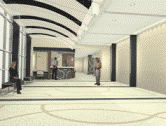
College of Dentistry: Faculty Publications
Document Type
Article
Date of this Version
9-1963
Abstract
The congenital anomaly of cleft palate can now be reproduced by a variety of teratogenetic agents in a number of laboratory animals (Kalter & Warkany, 1959). Through the use of the induced cleft palate numerous studies have been directed toward detecting the developmental mishaps which create this defect. The work of Fraser et al. (1957) suggested that various positional factors of the developing palatal and facial structures may be the underlying cause for failure of palatal closure in mouse embryos. Walker & Fraser (1956) observed elastic fibers among the palatal processes of mouse embryos which they suggested might impart a 'shelf force' necessary for proper closure and fusion. However, Walker (1961) has since reported that there is a mucopolysaccharide in the ground substance of the palatal mesenchyme rather than an elastic fiber network. Asling et al. (1960) noted a growth spurt of the developing mandible during the critical time of palatal process closure. Along with morphological positional effects the teratogenetic agents may affect the phase of direct cellular fusion of the two palatal processes. Different teratogens may even affect different developmental sites and still create the cleft defect. Even with the various morphological studies completed upon normal and cleft embryos the exact mechanism(s) causing the cleft palate defect remain unknown.


Comments
Published in Embryol. exp. Morph. Vol. 11, Part 3, pp. 60S-619, September 1963. Copyright 1963. Used by permission.